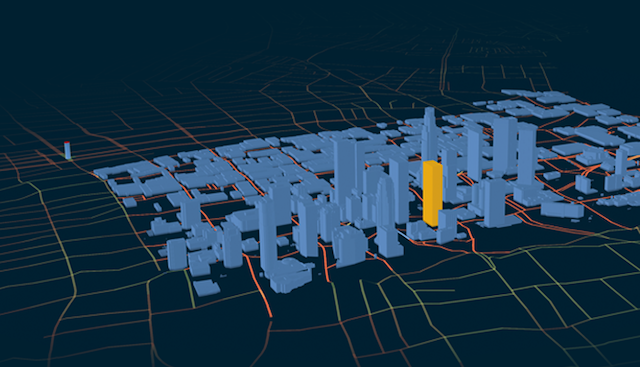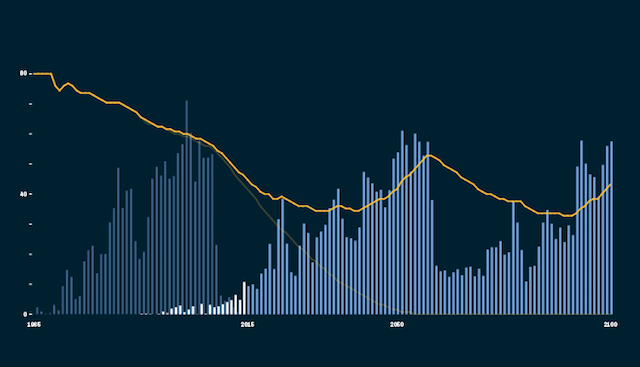At Baseform, we’ve combined years of applied R&D in water systems with a just as valuable track record in advanced computer development and implementation.
Baseform is proud to be 100% owned and managed by its founders. We're also proud that our product is 100% designed for water, from the ground up, by ourselves.
Since the company's inception in January 2015, we’ve rapidly gained a leading position in the markets where we are present, and owe it to not losing sight of a few seminal notions:
- water networks are not sets of pipes, they are living organisms that jointly provide a service – we focus on making sure utilities provide the service 24/7, now and in the long run;
- public infrastructures have to last beyond us, and the changes that each generation can introduce are very limited;
- the software tools available on the market – billing, inventory, SCADA, maintenance – are good at their respective roles; but they scatter data, processes and sources of information away from the key decisions;
- daily operation is an attention-sapper; operational decisions, planning efficiency and long-term corporate objectives have little chance of effectively aligning, unless something is done right at the root of the problem.
We have been successful at making better use of the data the utilities and cities already collect daily, and at targeting the key decisions (short- & long-term) with the right calculations, the right metrics, incorporating them in routine life.
Our site reflects a set of ideas that provide the context for the family of apps we make available to utilities, cities and the community. We believe this vision and our software can make a difference, in the water sector but also to the way in which cities make use of this ever less abundant resource.
About cities

Metropolitan areas concentrate 80% of the US population today. In 30 years, the UN estimates the same proportion will apply to the entire globe. Designing and managing cities and their infrastructures has never been so complex, and crucial.
One thing is for sure, the existing designs and design praxis must be bettered. Cities are not collections of infrastructural assets, much less static landscapes. Cities are people and we at Baseform see them move and change throughout the day, week, season, year, across each urban area.
Cities are the greatest constraints to the delivery of an infrastructural service – utilities take on a challenge that is in reality a societal challenge. Public infrastructures are there to provide a service to city dwellers, essentially in the buildings where they live, work or play. Managing cities and their infrastructures is all about understanding citizens, the places where they dwell and the way they behave, across time and space, at all times.
Growing sensorization and ubiquitous data
Knowing is a lot better than believing. As sensors multiply, we can combine data sources like never before, to reach a better understanding of human behaviors and levels of activity around the city, throughout the day and the year.
Engineering, architecture and urban planning are undergoing a fundamental revolution, where instead of relying only on projected versions of reality as in the past few centuries (models, in 20th century jargon), we can now increasingly observe that reality in detail and continuously adapt the designed landscape, facilities, infrastructures to the changing needs and intensities.
As far as public water infrastructures go, those needs are evidently ever changing. Not just the emerging, uncertain challenges of climate change, energy crises and their ilk, but the actual everyday fact. The short movie above, extracted from our database of over 1500 years of human consumption in cities around the world, suggests how any static urban zoning or strategic plan can easily miss reality and become a problem rather than the solution.
Ailing infrastructure

The useful life of water infrastructure pipes may range from over a century to less than a couple of decades. Cities need to re-invest accordingly. Not doing so is like not paying a bank loan – it builds up. In the US alone, the current deferred investment gap is estimated to surpass $60bn. Most major cities, with infrastructures built many decades ago, experience issues such as water shortages, leakage, tariff increases, water quality hazards.
The massive investments which are inevitably needed require long-term vision and systematic, defendable and transparent planning processes.
The darker blue bars in the chart show annual investment in a US city’s public water infrastructure, from its inception in the 1950s. The initial investment is mostly incorporated in the price of housing and thus borne by the initial property buyers. The white bars show current annual maintenance & rehab expenditure, at adequate levels by industry standards.
What modern society by and large has not experienced yet, is the rebound of those investment booms, as large numbers of pipes reach the end of their service lives and must be replaced (bright blue bars). This time around, the cost will not be diluted elsewhere, and the city must find ways to face expenditure needs well above the current ‘good practice’ rehab rates.
Networked infrastructures are not simply collections of assets. Extracting the best service out of capital and operational expenditure is not the same as replacing older cars in a rental fleet. Networks behave like networks; relative position and function matter. In order to maximize expenditure efficiency, we need to take into consideration the finance, the risk, but also the performance, the hydraulics, and above all, the service, where it’s delivered, and its recipients.
Technology is hardly a silver bullet, but it can help. The key are clear objectives, a good notion of how to measure them, and the will to make the right decisions.